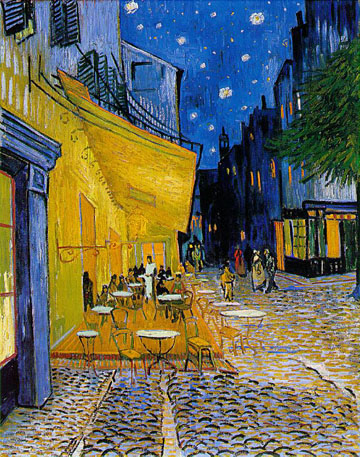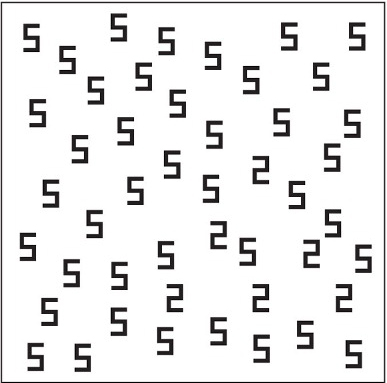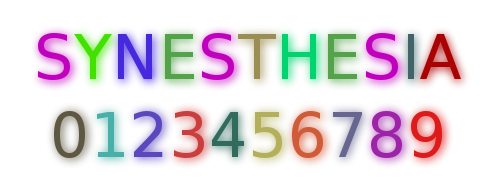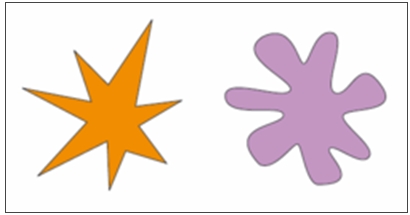November 19, 2018
What’s due?
- Saturation Studies are due.These should be cleanly and professionally presented, protected with tracing paper and ready to turn in.
- Post Phase 2: Define to the FYLC site.
Materials Needed:
- If you have a laptop with Adobe Illustrator installed and prefer to work on your own computer, please bring it.
- Bring Painting Materials, plus sketchbook
Critique/Discussion:
- Hang up and present your saturation studies to the class for Critique.
Grades and Standing
- Project #3 and late project submission grades will be posted shortly. See me with questions or for additional feedback.
- If you have not posted Phase 4: Deliver posts for Projects 1-3 or if you are not sure how you are doing in the class, please see me.
Lecture/Discussion
Vocabulary Review
Visual Hierarchy: The expression of visual and conceptual order that communicates degrees of importance of the various parts of a composition. This can be achieved through contrasts in size, placement, proximity, color, value, etc.
- Temperature: Cool colors (blue/violet) recede, warm colors (orange/yellow) come forward
- Saturation: Chromatic grays and muted colors recede, saturated prismatic colors come forward.
- Value: Generally, dark colors recede, light colors come forward.*
* There are always exceptions when saturation, temperature or other contrasts are involved.
FREE STUDY PREP
Graphic Design Trends and History:
“It seems that perfection is attained, not when there is nothing more to add, but when there is nothing more to take away..” – Antoine de Saint-Exupéry
- History of Flat Design
- Swiss style (International Typographic Style – use of grids, saturated color, sans-serif typography, and clean hierarchy of content and layout, often include large photographs with simple and minimal typography.)
- IMAGES
- Swissted : poster re-designs
- Swiss Style Poster Generator
- Minimalism (Geometric shapes, few elements, bright colors, and clean lines dominate) IMAGES
Cross-Sensory Metaphors and Synesthesia
- Cross-sensory metaphors (e.g., “loud shirt,” “juicy gossip,” “bitter wind,” “hot pursuit,” “icy stare,” or “prickly laugh”) are sometimes described as “synesthetic.” Other times they are just creative design or branding solutions.
- Synesthesia is the neurological mixing of the senses. Synesthes might associate a color with a number or sound with a letter or form.
- Color synesthesia is a form of synesthesia in which an individual’s perception of numbers and letters is associated with the experience of colors.
- Booba/ Kiki Effect: A popular experiment is the “Booba/ Kiki Effect”. In this experiment, originally designed by Gestalt psychologist Wolfgang Kohler, two shapes are shown to subjects. They are asked which one is a ‘booba’ and which one is a ‘kiki’. An overwhelming 98% of subjects chose the curvy figure as a ‘booba’ and the pointed figure as a ‘kiki’. We can think of this type of cross-activation (sound and shape) as a cross-sensory metaphor.
- Examples: Some accomplished artists, poets, scientists have synesthesia or work with cross-sensory metaphors.
- David Hockney: Artist (born July 9, 1937). Music → color. Hockney sees synesthetic colors to musical stimuli. In general, this does not show up in his painting or photography artwork too much. However, it is a common underlying principle in his construction of stage sets for various ballets and operas, where he bases the background colors and lighting upon his own seen colors while listening to the music of the theater piece he is working on.

- Richard Feynman: Nobel Prize winning physicist (May 11, 1918 – February 15, 1988). Graphemes → color. Feynman experienced colored letters and numbers . He developed a widely used pictorial representation scheme for the mathematical expressions governing the behavior of subatomic particles, which later became known as Feynman diagrams.
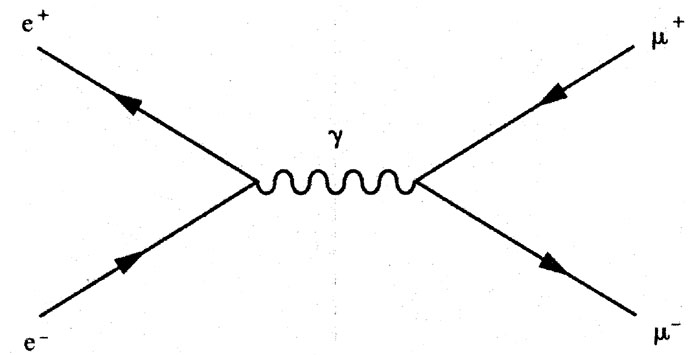
- “When I see equations, I see the letters in colors – I don’t know why. As I’m talking, I see vague pictures of Bessel functions from Jahnke and Emde’s book, with light-tan j’s, slightly violet-bluish n’s, and dark brown x’s flying around.” From Richard Feynman, p. 59.
- Wassily Kandinsky: Russian-born artist Kandinsky is widely credited with making the world’s first truly abstract paintings, but his artistic ambition went even further. He wanted to evoke sound through sight and create the painterly equivalent of a symphony that would stimulate not just the eyes but the ears as well. (from “The man who heard his paintbox hiss.”)
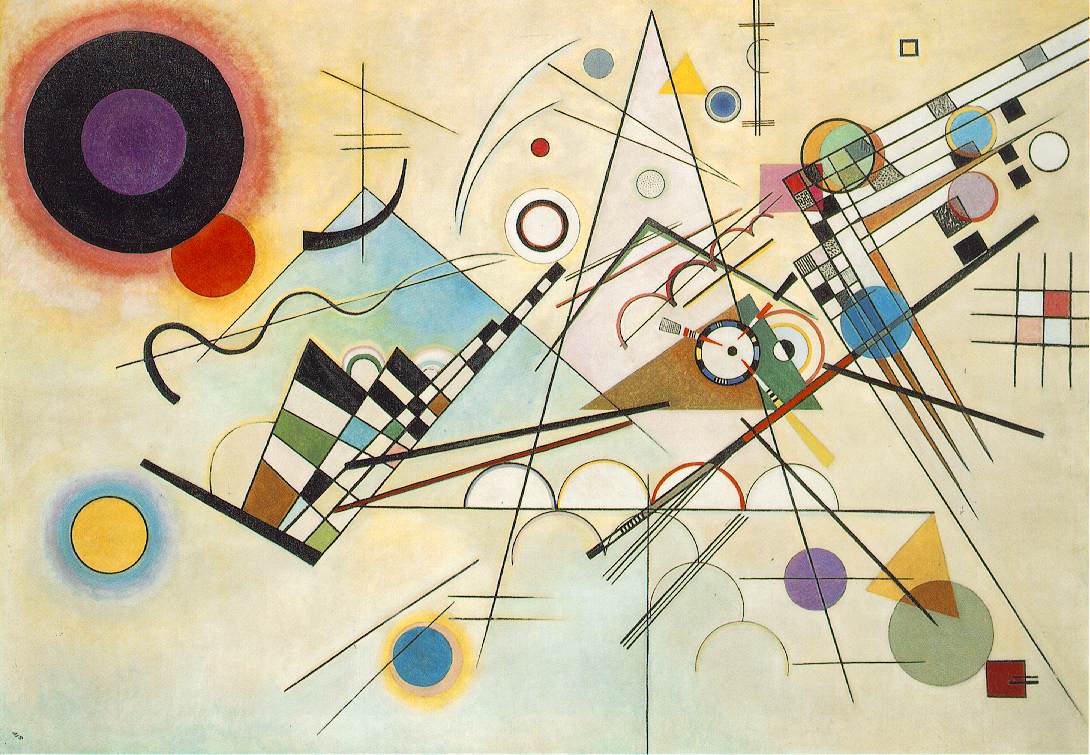
Kandinsky – ibiblio.org
- David Hockney: Artist (born July 9, 1937). Music → color. Hockney sees synesthetic colors to musical stimuli. In general, this does not show up in his painting or photography artwork too much. However, it is a common underlying principle in his construction of stage sets for various ballets and operas, where he bases the background colors and lighting upon his own seen colors while listening to the music of the theater piece he is working on.
References:
- The Most Beautiful Painting You’ve Ever Heard
- Seeing Colors: Grapheme-Color Synesthesia
- Other well-known Synesthes (scroll down to the bottom of the article)
- Sensory Copywriting
- List of Sensory Words
LAB: Free Study
Objective:
Via a collaborative FREESTUDY exercise, demonstrate the ways in which Cross-Sensory Metaphor (or meaning) and visual hierarchy can be conveyed using Saturation, Value, Color Temperature, and a Grid.
Swiss Style Poster
Working in groups of 3, create a poster for a performer or band that is named after a cross-sensory word or phrase. The colors, composition, and style will be based on the (3) cards you choose in class.
- Choose (1) Color card. It will be warm or cool.
- Consider your concept card before choosing one or two colors for your palette.
- Choose (1) Composition card.
- Using a piece of tracing paper, ruler and pencil, define the grid that is used in the sample poster layout.
- Choose (1) Concept card.
- Come up with a cross-sensory word or phrase that has at least two sensory meanings (Sight, Sound, Touch, Taste, Smell.)
- Consider your composition and color temperature before finalizing your word or phrase.
- Review the List of Sensory Words and create your own list, organized by sense.
- SWAP!
- The color, Concept and Composition should work together.
- If one of your cards doesn’t fit. Swap one of your cards with another group.
- It must be the same type of card.
- Create a layout in Illustrator using the sample poster as a template, your cross-sensory word or phrase, and appropriately warm or cool colors.
- You must use all three levels of saturation in your design (saturated, muted and chromatic gray).
- Consider how Visual Hierarchy is accomplished through contrast of saturation levels, size, placement.
- The title of your poster (performer name) will be the cross-sensory word or phrase that you choose.
- Take note of the fonts used in the sample poster and use a similar font in your layout. Use Font Book to load fonts or use Adobe Typekit if you have an Adobe account.
- Use guides to define the structure of the poster and make sure all elements in your composition are aligned to the grid.
- We will work on this together in class using these sample files.
References:
Poster Archives
Swiss Style Typefaces:
Homework:
We will have our third Glossument critique on November 26th!
- You should have completed at least 8 visualizations of glossary words and begin thinking about an overall theme or connection between the words.
- Information about the Glossument project can be found on our FYLC site: openlab.citytech.cuny.edu/rosenspevackfylcf18/glossument
Prof. George Larkins will come to the class to talk about his work in photography, motion graphics and film direction.
